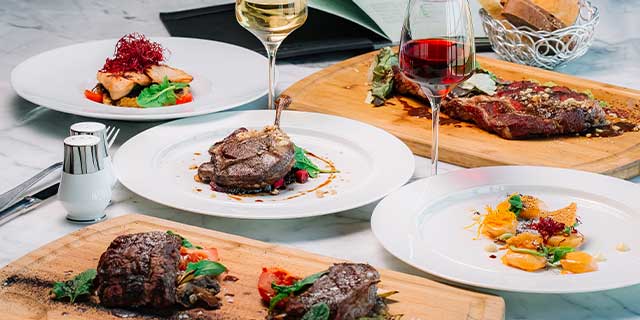When buying new tableware, you often look at the design and the color of the dinner plates, spoon, fork, and other utensils you want to use. Most of the time, you prefer the one with your favorite color or style. You want something that will match the theme of your dining table or the occasion you want to celebrate at home.
But did you know that the design of the tableware you use, specifically the color of the dinner plates, is more than just for aesthetic purposes? The main reason why the colors of the plates you use matter is how they can affect your appetite and how it manages to make the food look more pleasing to the eyes. Let’s dive deeper into this topic.
How Color of the Dinner Plates Affect Your Appetite?
Two researchers from Cornell University studied how colors affect one's appetite. Based on the study, those who had a plate with only a little contrast in their food’s color tend to serve themselves more to eat.
The foods served are pasta with Alfredo sauce and pasta with tomato sauce. The colors of the dinner plates available are white and red. A similar color to each of the pasta sauces. Those who get a white plate with Alfredo sauce pasta and a red plate with tomato sauce pasta tend to serve themselves 22% more compared to those who get a plate with a contrasting color to the pasta sauce.
This phenomenon is what we call the Delboeuf Illusion. It is a type of optical illusion that lets people misjudge the amount of food served on their plate based on the similarity of the colors.
Since there are lots of foods with different colors, you need to consider your tableware with a solid color if you want people to eat more of the foods you served. It also helps you control your food intake if you are on a diet. But the thing is, every color indicates a particular meaning. You need to know what those colors represent to make sure you get the right color for a great dining experience.
Different Colors of Dinner Plates and How You Can Use Them
White

They look good with any colors and also blend well with any theme or design you want to achieve on your dining table. Indeed, a great choice if you want to level up your food presentation and good investment.
If you use white plates on your dining table, you are making the dishes served stand out. White plates emphasize the ingredients used as they contrast with one another. Therefore, it makes the food more appealing to the eyes. However, it is not an ideal plate for those who are dieting. They will get attracted to the food easily and tend to eat more portions.
Black
It might be rare for some to see a black dinner plate, but many people also love to use it. These plates tend to give a more aesthetic and unique appearance to the dining table. It also gives off a minimalist appeal similar to the white dinner plates.
According to Cornell University’s study on the relation of the colored plate to the food we eat, black dinner plates are the ones that most alter people’s perception when it comes to the portion of the food. The black color gives off the impression that the food served on the plate, regardless of its size, is in large portions. This is probably the reason why you do not see black plates in restaurants often since they want you to order and eat more.
Pastel
Pastel colors include baby pink, sky blue, mint green, and other colors with softer shades. Dinner plates with any of these colors will help emphasize the natural look of the foods you served. It also makes your presentation cuter and retro.
Pastel-colored plates are perfect for homemade meals. It also allows your guest to feel at home with the friendly tones of these tablewares.
Bright colors

Bright and colorful dinner plates create a positive feel to the dining table. They also work well with white plates, creating a livelier ambiance as you eat. But aside from the aesthetic appeal of bright-colored plates, they also serve other important uses.
Dinner plates with bright colors can help you keep up with certain health conditions. Some of the examples are using blue plates for gluten-free foods and yellow plates to encourage patients with Alzheimer's disease to eat more portions. Since plates with bright colors make the food appealing, most children's plates are also made of these tones as well.
Earthy tones
Dinner plates with earthy tones include those with shades of brown or green. These plates are perfect for those who want a healthier approach when it comes to the food they eat or encourage someone to eat nutritious meals.
It also works well for those who are nature-loving, especially if they want to achieve an environmentally-friendly dining theme.
Plates with patterns
It is also common to see plates with different patterns. These plates are great decorations, especially if you want a specific theme for your dining room or if there are any occasions you want to celebrate.
How these patterns are designed on the plate can affect the way you see the food on it once served. Most of these patterns are located on the rim, so they can provide more attention to the dish. Some designs can also complement certain meals, allowing the important ingredients to stand out. If you want to spice simple meals you cook at home, you can try using these plates to make the food look tastier and more colorful.
Conclusion
The color of the dinner plates does not exist for decorative purposes only. They also help you to be in control over the food you eat. It also makes every dining experience more memorable together with the people you cherish. If you are buying a new set of plates, make sure you get the right color according to your needs.

